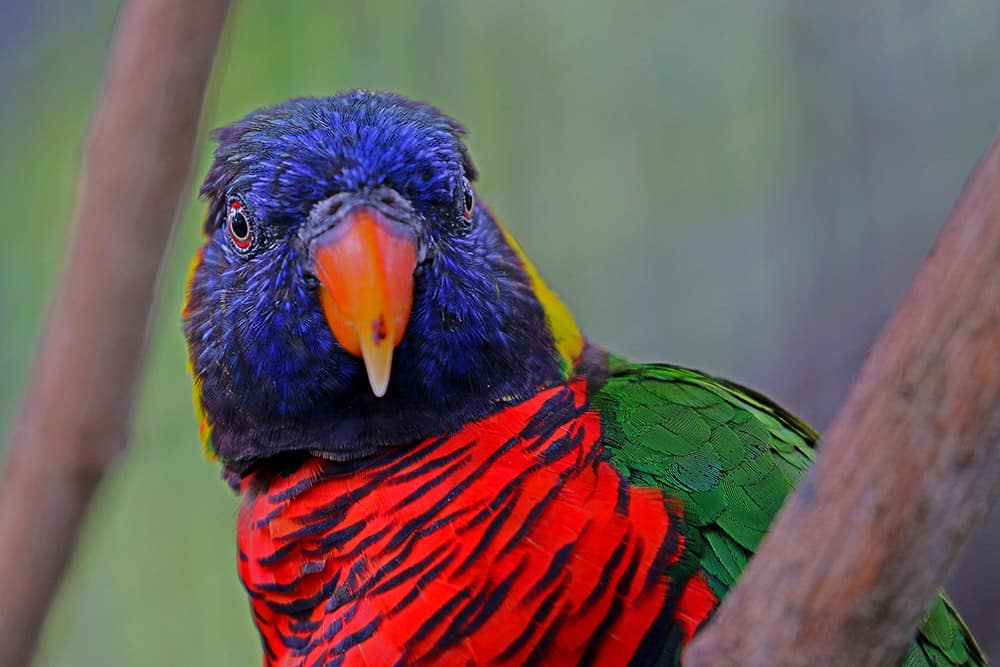Scientific Classification
| Kingdom: | Animalia |
| Phylum: | Chordata |
| Class: | Aves |
| Order: | Psittaciformes |
| Family: | Psittacidae |
| Genus: | Trichoglossus |
| Species: | haematodus |
Scientific name
Description
The Green-naped Rainbow Lorikeet is one of the most colorful members of the parrot family. It is almost impossible to tell the difference between a lorikeet and a lory although some say the lorikeet has a longer tail than the lori. Also, the lorikeet has a pointed tail while the lori’s tail is rounded. The lorikeets and the lorys have a “brushlike” tongue that is used for eating fruits, flowers, nectars, and pollens. There are at least 21 different kinds of Green-naped Lorikeets.
Care and feeding
The lorikeet’s main diet consists of nectar and fruit. They can eat some greens and some seed. Special diets which can be purchased at most pet stores have been formulated to feed the bird in either a wet form as a nectar or in a dry form as a powder. Make sure you have water near the powder, if that is what you are feeding, so the bird can take drinks while eating. Fresh fruit or unsweetened canned fruit should be fed regularly.
Distribution
Northern and eastern parts of Australia, and also the islands north and east of Australia.
Size – Weight
Reaches up to 10 inches in length including the tail.
Social Behaviors
:
In the wild they spend most of their time in flocks.
Physical characteristics
Very colorful, from 6-11 inches including the tail. The sub-adults have a dark brown beak and brown irises. The beak turns red as they mature. Life span is 15 or more years, they mature at 1-2 years.
Housing
A roomy cage is required unless the bird is to be let out for extended periods. Many birds can spend most of their time on a playpen or parrot perch. A cage guard is a good idea since their droppings are a sticky fluid which ends up outside the cage.
Breeding/Reproduction
Lorikeets are easily bred. Although they are not easy to sex, once they are established, they nest freely.
Potential Problems
Availability
Activities
Make sure you give them lots of toys, swings, and perches since they are very active and love to play.
Featured Image Credit: Joseph M. Arseneau, Shutterstock
